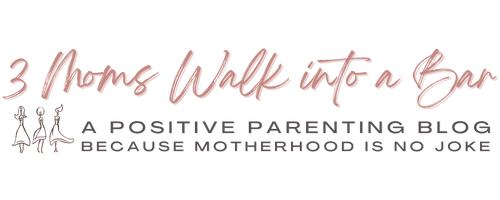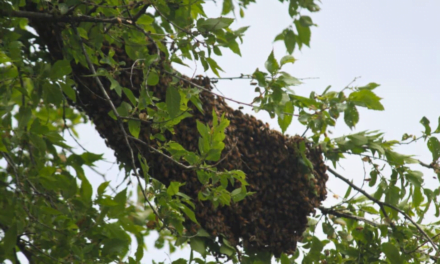When my oldest child was a baby, he had an awful-looking rash on his elbows and the backs of his knees. Any time I brought it up with the pediatrician, it was brushed off as “Oh that’s eczema. Some babies are prone to it.” Allergies were not a consideration.
He prescribed a cream to use multiple times a day to ease the rash, but it never went away. As a first-time mom, I followed the pediatrician’s orders and used the cream when the rash would flare.
oh, the wisdom of seasoned moms…
Several months later, I was on a trip with a group of high school kids and a seasoned mom. She caught a glimpse of the rash he was scratching and asked if he had been tested for food allergies. With him only being 10 months old, food allergies had never crossed my mind. He was starting to eat solid foods, but I had not noticed that any bothered him. I had never considered taking him for food allergy testing.
A couple of months passed. While at work, I received a mid-day call from the daycare. It was unlike them to call at that time of day unless there was a problem. I answered the phone to a panicked daycare teacher telling me that my son was covered in hives and throwing up. My brain immediately went back to the conversation I had a few months earlier with the seasoned mom, and the first thing I asked the teacher was, “What has he eaten today?” She rattled off the list of foods, and I knew as soon as she got to it that he had a peanut allergy.

I called the pediatrician. They advised that as long as he was breathing normally to give Benadryl and wait for the hives to go away. I pressed for a referral to an allergist and was quickly seen. The allergist completed a skin test and a food allergy blood test to determine the severity of his allergies. It was confirmed that he was allergic to peanuts, pecans, and walnuts.
navigating the world of childhood food allergies
We were sent home with an EpiPen and a list of instructions explaining how to check food labels. The allergist explained that with each contact, the severity of the allergy can increase. We had to be extremely careful with what he ate or was in contact with. I soon learned that peanuts and tree nuts can be in or cross-contaminate many foods. My husband and I began reading every label of food purchased, which made grocery shopping significantly longer.
Our son’s allergy to peanuts and tree nuts was severe and worsened as he got older. We quickly learned that foods labeled with “may contain” were not safe for him to eat after a bad reaction to a lemon head.
Allergens can also be hidden in things like pet food and transferred through pet saliva. We changed our dog food after we noticed that he would break out in hives when our excited dogs would greet him as he went out to play.
early signs of childhood food allergies
Looking back, I realize that my oldest’s food allergy was there from the beginning. He had some of the classic symptoms of food allergies. At the time, I didn’t know that proteins from the foods I ate were passed through the breast milk to him. The things a mom eats do affect the makeup of breast milk. I have breastfed all seven children and have had to eliminate different foods with several of them.
Signs like eczema and excessive spit-up were some of the first that I noticed. Throughout my breastfeeding journey, I have had to eliminate dairy, nuts, wheat, soy, corn, tomato, banana, sweet potato, or egg. With most, I only had to eliminate dairy and nuts, but with one daughter, I had to eliminate all of those things.

The pediatrician joked that I was not going to have anything left to eat if we kept finding foods that she could not have. She reacted to so many foods once I started to add in solids, I had to eliminate them from my diet and go back to exclusively breastfeeding her until she was almost a year old.
Thankfully, by eliminating things from my diet while breastfeeding, most were able to outgrow the intolerances by the time they turned one. With seven kids, we still had some turn into full-blown allergies. Two have peanut and tree nut allergies, one is allergic to fluoride, one is allergic to wheat, and another is allergic to fish. Some of those allergens are easier to avoid than others.
In the United States, eight foods are identified as the top 8 food allergens: peanuts, tree nuts, fish, shellfish, milk, eggs, wheat, and soy. The FDA requires that these 8 common food allergens be listed on packaged foods and beverages.
tips to help you avoid food allergens:
- Read the label and then read it again. Look for the “Contains” or “May Contain” underneath the ingredient list. If you don’t see anything there, look in the ingredient list itself. Some companies list the allergen in bold in the ingredient list.
- Check the labels of items every time you purchase them. Companies change manufacturing facilities from time to time. Just because a product was made in a safe facility for months or years, it doesn’t mean it will always be a safe product.
- Be careful preparing food. If not everyone in your house is allergen-free, be careful to avoid cross-contamination when cooking. Clean up your workspace and utensils as soon as you finish cooking.
- Be prepared for accidental ingestion of an allergen. Make sure people around you know how to help you if you ingest your allergen. Some allergens can be treated with an over-the-counter allergy medicine like Benadryl. Other reactions may require the use of an EpiPen.
Let us know what additional resources you would find helpful for supporting your loved one with food allergies in the comments below. You can join the discussion on navigating food allergies in the 3 Moms Blog Facebook Community Group. Worried about special occasions, like birthdays, if you have to cut wheat or other grains from your diet? Here is an easy-to-make gluten-free, grain-free cake that will not leave anyone disappointed.





